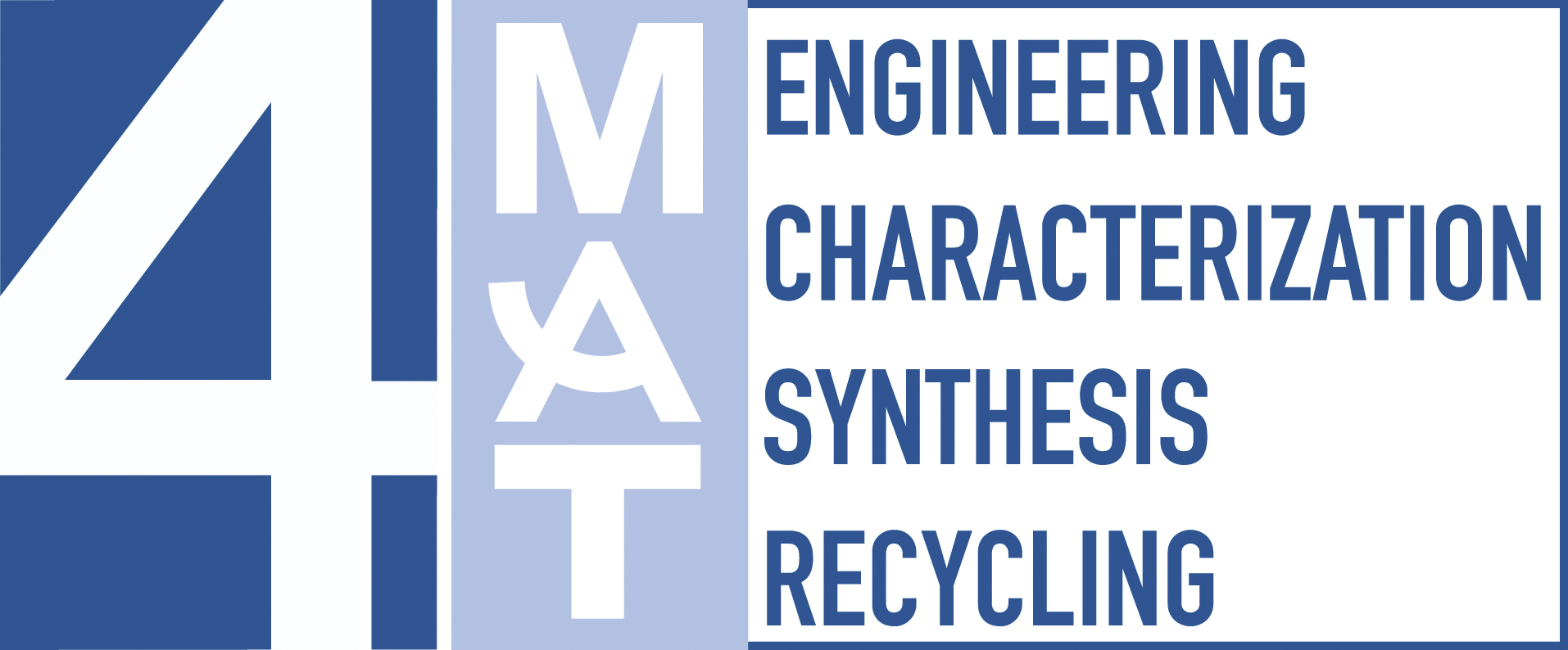In the same section
Post-doc Researcher

Campus du Solbosch - CP 165/63
Avenue F.D. Roosevelt, 50
1050 Bruxelles
-
Biosketch
-
After graduating with a master in chemical and materials engineering in the Bruface program from the VUB in 2014. She then pursued a MSc in Archaeological Science at the university of Oxford and graduated in 2015. She continued her academic pursuits by completing a PhD at the KU Leuven and the VUB under the supervision of Prof. Degryse and Prof. Claeys on the development of non-destructive analysis methods for the study of archaeological objects, which she completed in 2019. Since then she’s collaborated on various projects applying (micro-)XRF, (LA-)ICP-MS and Sr, Nd and Pb isotopic analysis on various materials such as timbers (post-doc at the university of Copenhagen 2019-2020), metals and mostly glasses (back at the KU-Leuven)
-
Research Topics
- Her research within 4Mat will focus on the investigation of raw materials and recipes for the medieval stained glass windows of the abbey of Stavelot in Belgium which are a prime example of an early adoption of wood ash as flux. For this she obtained an FRS-FNRS post-doctoral research grant and will be working closely with CreA-patrimoine
-
Teaching
- HAAR-D-600 : Analyse des matériaux archéologiques organiques (Mme A. Van Ham-Meert)
-
Projects
-
Editor for glass in the GlobaLID lead isotope database : GlobaLID - Team (archmetaldbm.github.io)
-
Publications
-
Articles dans des revues avec comité de lecture
2023
Ni-rich mineral nepouite explains the exceptional green color of speleothems
Vlieghe, M., Rochez, G., Pire-Stevenne, S., Storme, J.-Y., Dekoninck, A., Vanbrabant, Y., Namur, O., Zhang, Y., Van Ham-meert, A., Donnadieu, J.-P., Berbigé, M., Hasbroucq, J.-L., & Yans, J. (2023). Ni-rich mineral nepouite explains the exceptional green color of speleothems. Scientific Reports, 13(1). doi:10.1038/s41598-023-41977-7Abstract Speleothems are secondary mineral structures typically found in karstic caves and usually composed of calcite or aragonite. Despite being naturally white, some might exhibit unusual colors, such as blue, black, red, yellow or green. The causes of these exceptional colorations are poorly understood, especially for green speleothems, which are barely reported. Here we describe the occurrence of the green Ni-bearing serpentine nepouite in green aragonite and calcite speleothems, in the Aven du Marcou (Hérault, France). Nepouite is mainly found as flat lamellar crystals in the outer rim of green speleothems and crystallized alongside radially grown aragonite crystals. This supports nepouite beginning to crystallize recently, due to a change in the chemical composition of the water. Nepouite also exhibits extensive substitution between Ni, Mg and Zn. The various elements responsible for nepouite precipitation are thought to come from the weathering of pyrite crystals in the overlying rocks, which is consistent with the pH conditions of the cave and the Al-free composition of nepouite. This study explains the crystallization mechanisms and stability conditions of silicate minerals in colored caves.
https://dipot.ulb.ac.be/dspace/bitstream/2013/362795/3/Vlieghe_et_al-2023-Scientific_Reports.pdfProvenancing 16th and 17th century CE building timbers in Denmark-combining dendroprovenance and Sr isotopic analysis
Van Ham-meert, A., & Daly, A. (2023). Provenancing 16th and 17th century CE building timbers in Denmark-combining dendroprovenance and Sr isotopic analysis. PloS one, 18(2), e0278513. doi:10.1371/journal.pone.0278513Dendrochronology (tree-ring analysis) allows us to precisely date and identify the origin of timber from historic contexts. However, reference datasets to determine the origin can include timber of non-local origin. Therefore, we have applied Sr isotopic on timbers from three buildings in Jutland, Denmark, mostly dating from the late 16 th and early 17 th centuries CE to improve and refine the provenance identification. The dendrochronology suggested that some timbers analysed were imported from the Swedish side of Øresund/Kattegat while others were local, and others again might be from south Norway. By adding the Sr isotopic analysis, a far more detailed interpretation of the origin of these timbers can be presented for non-Danish timbers. In this paper we suggest that Danish ports in the provinces of Halland and Skåne played a major role in the timber trade between the Danish and Swedish parts of the Danish kingdom. For Danish timbers dendroprovenancing proved better than Sr isotopic analysis. Furthermore, a small number of Sr isotopic analyses were performed to contribute to the base-line along the Göta-river in Southern-Sweden.
https://dipot.ulb.ac.be/dspace/bitstream/2013/362796/1/doi_346440.pdf2021
Comparison of Minimally Invasive Inductively Coupled Plasma-Mass Spectrometry Approaches for Strontium Isotopic Analysis of Medieval Stained Glass with Elevated Rubidium and Rare-Earth Element Concentrations
Van Ham-meert, A., Bolea-Fernandez, E., Belza, J., Bevan, D., Jochum, K. P., Neuray, B., Stoll, B., Vanhaecke, F., & Van Wersch, L. (2021). Comparison of Minimally Invasive Inductively Coupled Plasma-Mass Spectrometry Approaches for Strontium Isotopic Analysis of Medieval Stained Glass with Elevated Rubidium and Rare-Earth Element Concentrations. ACS Omega, 6(28), 18110-18122. doi:10.1021/acsomega.1c01939
https://dipot.ulb.ac.be/dspace/bitstream/2013/362797/3/VanHam-Meertetal_2021.pdfTesting Various Pre-treatments on Artificially Waterlogged and Pitch-Contaminated Wood for Strontium Isotope Analyses
Snoeck, C., Schulting, R., Brock, F., Rodler, A. A., Van Ham-meert, A., Mattielli, N., & Ostapkowicz, J. (2021). Testing Various Pre-treatments on Artificially Waterlogged and Pitch-Contaminated Wood for Strontium Isotope Analyses. Frontiers in ecology and evolution, 8, 589154. doi:10.3389/fevo.2020.589154Strontium isotope ratios (87Sr/86Sr) are commonly used in archeological and forensic studies to assess if humans and fauna are local to the place they were found or not. This approach is largely unexplored for wooden artifacts recovered in archeological contexts, as wood - in the rare instances it does survive - is often poorly preserved. One of the most common ways wood is preserved is through the anoxic conditions found in waterlogged contexts. A more unusual form of preservation is through submergence in natural pitch. These depositional media contribute their own strontium values to the in vivo 87Sr/86Sr wood values, which needs to be removed prior to analysis. Here we test several pre-treatment methods to remove potential strontium contamination from wood samples that were artificially immersed in seawater and pitch from Trinidad's Pitch Lake. Water rinses and acid-leaching tests were carried out with hydrochloric acid and acetic acid to remove exogenous strontium from experimentally waterlogged wood. These tests removed large amounts of strontium from the samples and did not enable the recovery of the endogenous 87Sr/86Sr signal. For samples artificially immersed in pitch, the pre-treatments tested were based on radiocarbon dating procedures and carried out with and without the aqueous-based acid-base-acid (ABA) step. The use of organic solvents alone (methanol and toluene) removed exogenous strontium originating from the pitch. However, the ABA step eliminates large amounts of in vivo strontium from the samples. These tests show that 87Sr/86Sr values of wood are altered by the presence of pitch and water. With adequate pre-treatment using exclusively organic solvents, it may be possible to remove this contamination for samples immersed in pitch. However, the aqueous-based ABA pre-treatment should be avoided. The removal of contamination from waterlogged samples was unsuccessful with the current pre-treatment protocols and more research is needed. More importantly, and unexpectedly, 87Sr/86Sr values may extend outside of the mixing line between the wood's endogenous strontium and the water. These results indicate the need for extreme caution when attempting to determine the provenance of waterlogged wood.
https://dipot.ulb.ac.be/dspace/bitstream/2013/320346/3/Snoecketal2021Frontiers.pdf2020
Determining the Sr isotopic composition of waterlogged wood - Cleaning more is not always better
Van Ham-meert, A., Rodler, A., Waight, T. E., & Daly, A. (2020). Determining the Sr isotopic composition of waterlogged wood - Cleaning more is not always better. Journal of archaeological science, 124, 105261. doi:10.1016/j.jas.2020.105261
https://dipot.ulb.ac.be/dspace/bitstream/2013/362798/3/VanHam-Meertetal_2020.pdfSasanian copper and billon coins from the collections of the Royal Museums of Art and History, Brussels, Belgium—insights using semi-quantitative analysis by μXRF
Van Ham-meert, A., Rademakers, F. W., Gyselen, R., Overlaet, B., Degryse, P., & Claeys, P. (2020). Sasanian copper and billon coins from the collections of the Royal Museums of Art and History, Brussels, Belgium—insights using semi-quantitative analysis by μXRF. Archaeological and Anthropological Sciences, 12(10). doi:10.1007/s12520-020-01191-2
https://dipot.ulb.ac.be/dspace/bitstream/2013/362799/3/VanHam-Meert202_SasanianCopper.pdfhttps://dipot.ulb.ac.be/dspace/bitstream/2013/362799/4/VanHam-Meert202_SasanianCopper.pdf2019
Antimony as a raw material in ancient metal and glass making: provenancing Georgian LBA metallic Sb by isotope analysis
Dillis, S., Van Ham-meert, A., Leeming, P., Shortland, A., Gobejishvili, G., Abramishvili, M., & Degryse, P. (2019). Antimony as a raw material in ancient metal and glass making: provenancing Georgian LBA metallic Sb by isotope analysis. STAR: Science & Technology of Archaeological Research, 5(2), 98-112. doi:10.1080/20548923.2019.1681138
https://dipot.ulb.ac.be/dspace/bitstream/2013/362753/3/Dillis_Sb_paper.pdf
